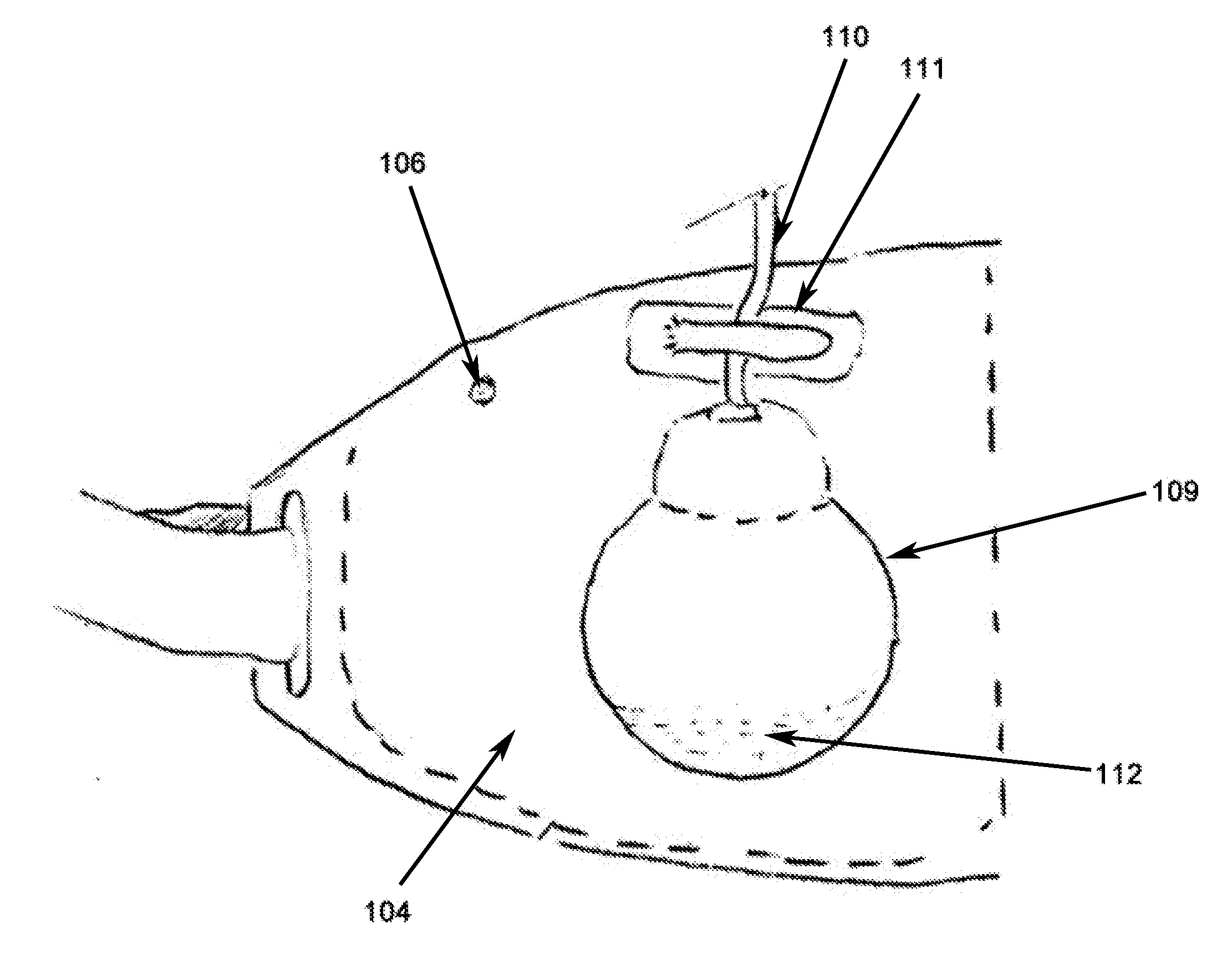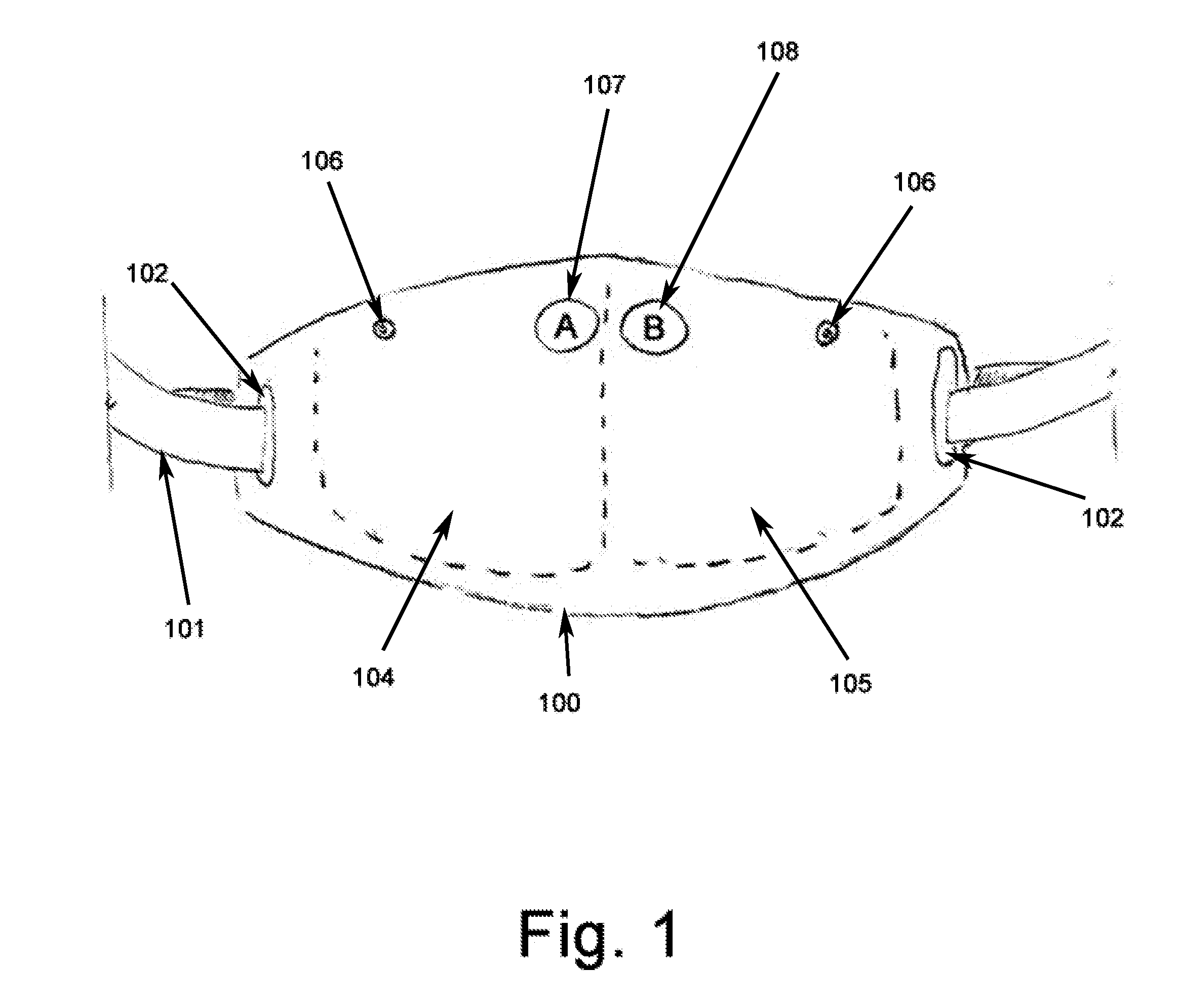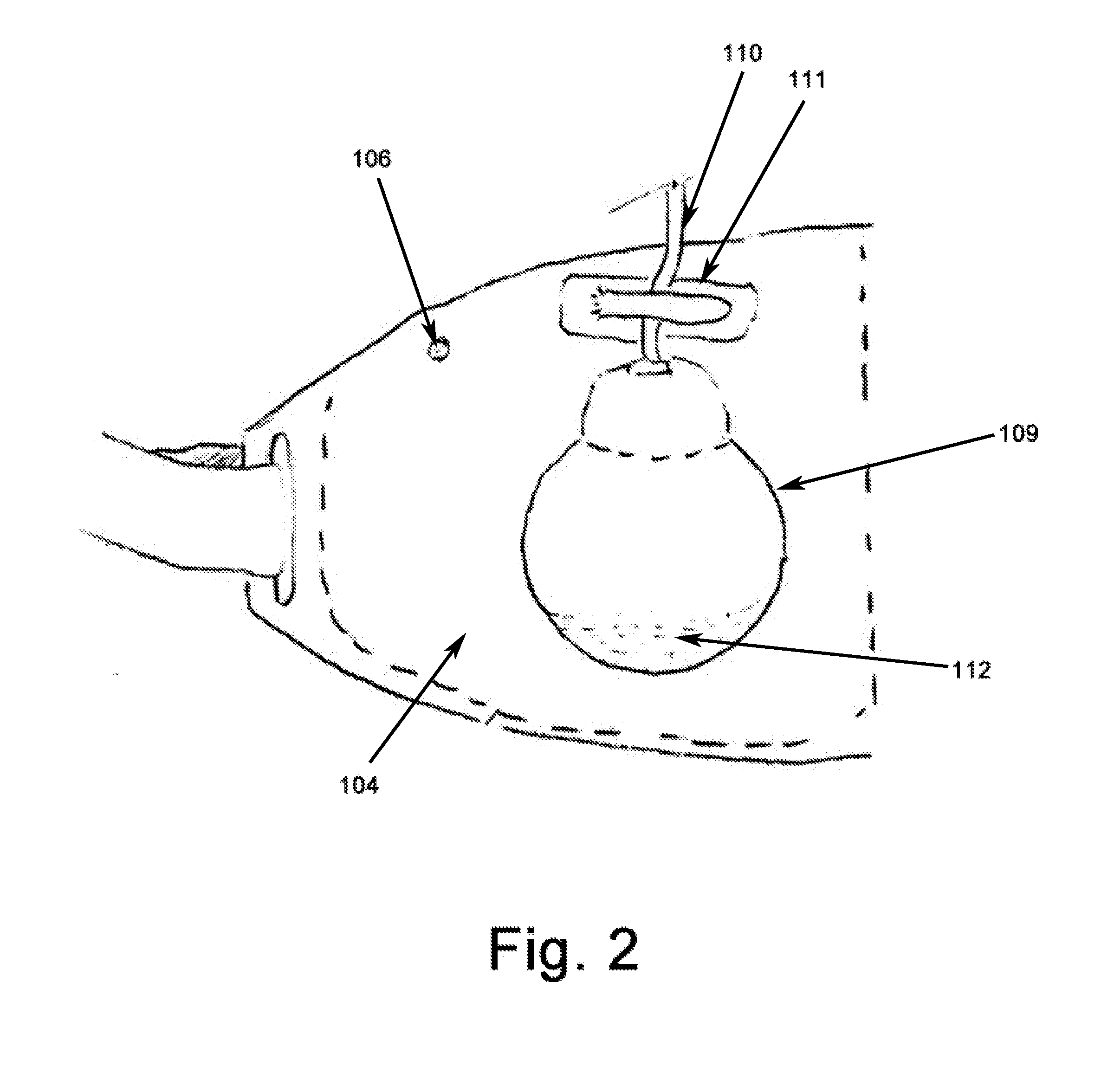Carry Belt for Vacuum Surgical Drains
a technology for vacuum surgery and drains, which is applied in the field of belts, can solve the problems of confusion of nurses or technicians, inconvenient recording, and difficulty in storing drains when patients move about, and achieve the effect of improving the drainage of wounds
- Summary
- Abstract
- Description
- Claims
- Application Information
AI Technical Summary
Benefits of technology
Problems solved by technology
Method used
Image
Examples
Embodiment Construction
[0014]Referring now to FIGS. 1 and 3, an improved carry belt for Jackson-Pratt® (J-P) vacuum surgical drains is comprised of a carrying part 100 and an attaching part. The attaching part may be: 1) A strap 101 for circumferentially encircling the patient at a suitable site below the installed drains; or, 2) A paper-backed adhesive pad 103 affixed to the back panel of carrying part 100. Carrying part 100 is constructed of equal sized rectangular or ovoid front and back panels. To assemble carrying part 100, the front and back panels are placed one atop the other and then joined at their respective peripheral edges by sewing, sonic welding, or equivalent means, leaving the top edge of the each respective front and back panel open thus forming a pouch. This pouch is further sub-divided by sewing, sonic welding, or equivalent means into at least two sub-pouches 104 and 105. Parallel slots 102 formed in the respective ends of carrying part 100 are included for receiving the respective op...
PUM
 Login to View More
Login to View More Abstract
Description
Claims
Application Information
 Login to View More
Login to View More - R&D
- Intellectual Property
- Life Sciences
- Materials
- Tech Scout
- Unparalleled Data Quality
- Higher Quality Content
- 60% Fewer Hallucinations
Browse by: Latest US Patents, China's latest patents, Technical Efficacy Thesaurus, Application Domain, Technology Topic, Popular Technical Reports.
© 2025 PatSnap. All rights reserved.Legal|Privacy policy|Modern Slavery Act Transparency Statement|Sitemap|About US| Contact US: help@patsnap.com



